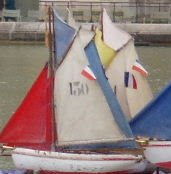The ones that caught my attention on this short visit have been mostly paired in contrasting styles and circumstances, such as the one above of one of the four identical rococo palaces at Amalienborg, residences for the Danish Royal Family since the 18th century, with the mixed modern flats in long extended blocks for their non-royal subjects...
The ornate brick and stone patterned façade of a 17th century house with the geometrically tiled surfaces of a 20th century planetarium, as they both project unconventional profiles upwards...
The batten-boarded and gable-roofed upper stories of this ivy-clad institutional building provide a traditional, almost warm and homey, feel to the school it now houses, while the sharply delineated corner glass windows of the apartments in the building below bestow a coldly hard-edged chevron design to an otherwise unadorned bare brick block...
The 21st century state of the art Copenhagen Opera House floats on an island in the harbour and is perfectly aligned with the axis that runs through the octagonal plaza of the Amalienborg palaces across the water, while the perfectly scaled and thoughtfully built duckhouse floats tranquilly in the pond of the Royal Library courtyard [watched over by the statue of Soren Kierkegaard no less!]...
A few kilometers north of Copenhagen on the way to the Louisiana Museum of Modern Art located in the quiet seaside village of Humlebaek, the country vernacular manifests in tiny red cottages with picket fences and overgrown rose bushes and in larger thatched homes with well-tended gardens...all still as fresh and wholesome as in simpler times...












No comments:
Post a Comment